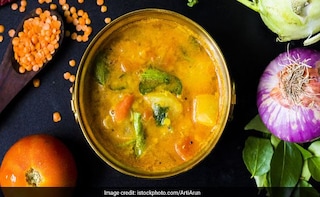There are few things on this earth that are truly ambrosial on the palate - a perfectly brewed cup of coffee, a silken piece of dark chocolate cake and of course a steaming bowlful of sambar among others. The humble sambar is well travelled; to an extent that every region in the country has accepted its idiosyncrasy and played with indigenous spices to arrive at an equally interesting version. There is no denying that the traditional sambarvaries within the boundaries of Southern states as well. How a bowl of sambar tastes in Bengaluru will be different from the way it is cooked and served in God's own country, Kerala or for that matter in the neighbouring Tamil Nadu.As this article is not a deep dive into the origins or the history of sambar, but a quick guide to helping you dish out a batch like a pro, I will first take you through some of the many ways in which the soulful curry differs from region to region. Experts suggest that the use of oil and the inclusion of local ingredients bring about a stark difference in the way a bowl of sambar tastes in different areas in South India.
Sambar - the comfort food of South India
Advertisement
- Boil and keep aside tuar dal (one-two bowl).
- For the sambar powder you will need 1 tbsp of channa dal, dhaniya seeds, fresh chopped coconut and 5-6 dried lal mirch. Take 3 tbsp of oil and let all of the above mentioned ingredients fry until boil. Remove when done, grind into powder and keep aside.
- Take 50gms of tamarind and soak in 2 cups of hot water, leave for 10 minutes. Squeeze out all the water from soaked imli and keep aside.
- Boil all vegetables until half cooked and add tamarind water to it.
- Cook for 5 minutes, add sambar powder and salt, cook for 5 minutes. Add dal, cover and cook for 10 minutes.
- Prepare tempering by using 2-3 tbsp of oil and adding 1 1/2tsp of mustard seeds, half a tsp of methi dana, a crushed dried red chill, few curry leaves and a pinch of asafoetida. Let it splutter and add to the sambar mix.
- Cook for a minute and serve hot.
Advertisement
For the latest food news, health tips and recipes, like us on Facebook or follow us on Twitter and YouTube.
Advertisement
Tags:
